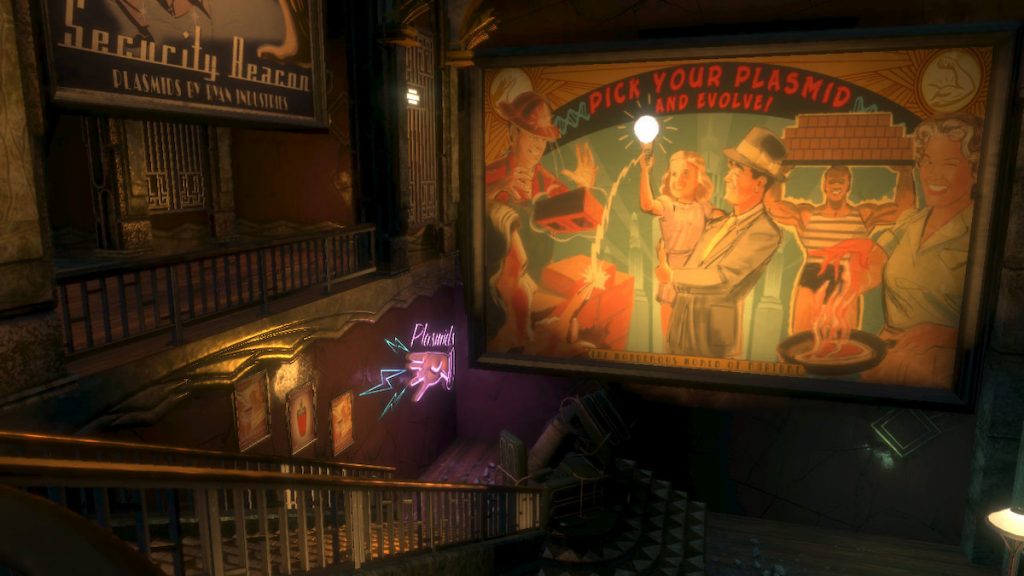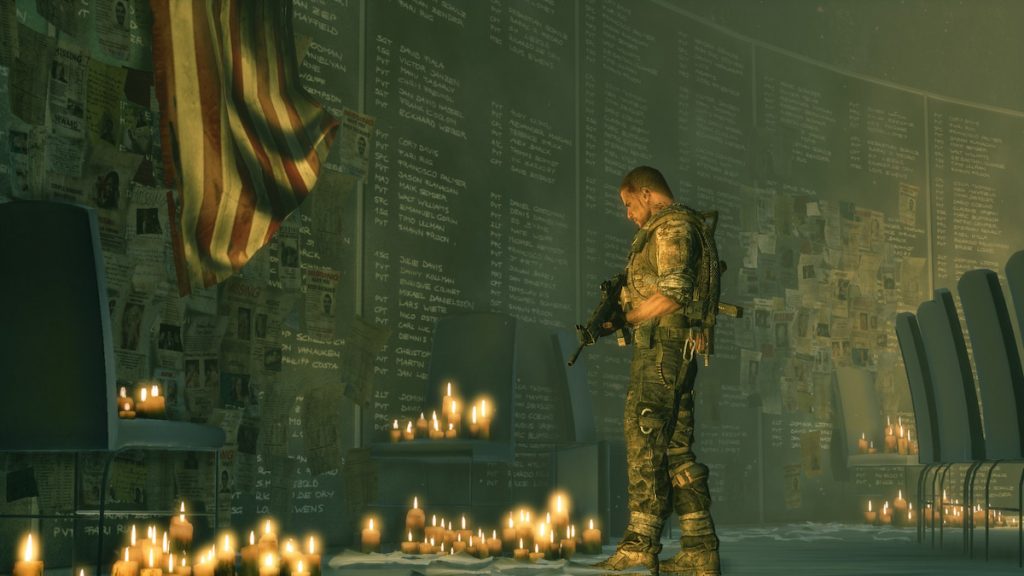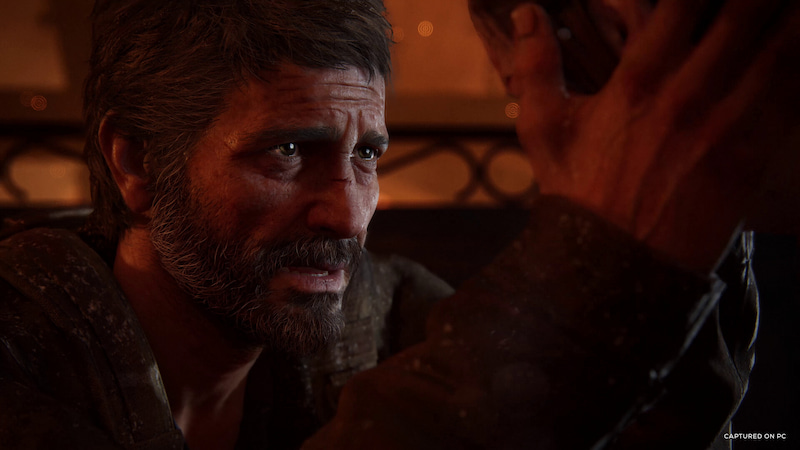As a video game writer and narrative designer, I’m biased, but I love a good video game story. I relish the challenge of crafting a compelling game story as much as I enjoy playing through one. Good video game stories, however, are difficult to create. Unlike most other forms of media, video games offer active rather than passive entertainment. That is, the player not only actively engages with the crafted game story but creates their own, unique narrative through their experiences. With that in mind, how do you write a video game a story?
Defining a Good Video Game Story
First, we should define what I mean when I say a good video game story. I define it as a compelling harmony of plot, characters, and worldbuilding. When combined, these facets form a tale that intrigues throughout. It commands your attention from the game’s introduction through to its conclusion. Put simply, you want to keep on playing to find out what happens next.
How To Write a Video Game Story: 5 Core Elements
Over the course of the dozen or so video game I’ve worked on, I’ve developed an interactive storytelling framework, which I use for story design. In my opinion, there are five core elements that underpin most good games stories.
Please note that this is by no means an exhaustive list on how to write a video game story. But I do believe that it’s a reliable starting point to help.
Complement Gameplay
By definition, video games are meant to be played. The degree of player control, or agency, varies between styles and genres of games. But, at the end of the day, video games are an interactive form of entertainment due to the gameplay elements.
It therefore stands to reason that the video game story you’re trying to tell should complement your primary gameplay mechanics. Nobody wants play a game in which the story feels out-of-place, like it belongs in a different game altogether. For example, if a game is a survival game, it should tell a story of, well, the struggle for survival. This may sound overly-simplistic, almost reductive. But, in the chaos of game development, it’s all-too-easy for disharmony to take root between game design and story.
It’s also worth emphasizing that not all video game need a significant story element. For example, survival crafting games like the recently-released Enshrouded have smatterings of lore to maintain intrigue, but little in the way of plot. This is by design, since a prescribed plot would potentially limit free exploration – a core tenet of games in this genre.
Ludonarrative Dissonance
Finally, you usually want to avoid ludonarrative dissonance: a disconnect between the player, the game design, and the story. As Evan Skolnick explains in his superb book, ‘Video Game Storytelling’, there are two forms of ludonarrative dissonance.
The first is when the player’s desires and the player character’s desires don’t align. So, you want to fight these incoming enemies, but your video game avatar turns tail and flees, seemingly out of character.
The second is when the narrative depiction of the player character is inconsistent with the gameplay. The Uncharted games, for all their qualities are infamous for this. Under your guidance, the player character, Nathan Drake, mows down hundreds of goons. He should be emotionally stunted, if not downright scarred, but he never stops making quips as part of his cheeky chap persona. Uncharted gets away with it because the rest of the story elements are in harmony with the gameplay mechanics: discovering treasures, solving Indiana Jones-esque puzzles, and enviable globetrotting. But unless you’re Naughty Dog or making an ironic game, I’d advise taking ludonarrative dissonance seriously.

Hook the Player…
It won’t matter how well the story elements complement the gameplay mechanics if the player isn’t invested in the story. You need to seize the player’s attention with a solid “hook”. To do this, establish what I call intriguing overarching questions as soon as possible.
I’ve played far too many games that, narratively-speaking, take a long time to get going. Frankly, I can’t think of any good reason for this. It’s fair that games may need to start slowly gameplay-wise to onboard the player and teach them the fundamentals, like basic controls. But, provided you don’t confuse the player with an information overload, there’s no need to start the story sluggishly. Introduce the player character and their normal world, take them to a new, unfamiliar world, and then drop the “hook.”
The games that are commonly lauded for having excellent stories usually feature prominent intriguing overarching questions. In Bioshock, for example, protagonist Jack’s plane crashes into the Atlantic Ocean in the game’s opening. From there, the player guides him into a mysterious lighthouse, which leads to the eerie underwater city, Rapture. This all happens within the first few minutes. The opening sequence gives rise to intriguing overarching questions such as: Why did Jack’s plane crash? What happened to Rapture’s residents? And what role does Jack play in the city’s story? Set these intriguing overarching questions early. Don’t be afraid of a little mystery.

… Then Pull Them Through
Establishing the intriguing overarching questions early on is only the beginning. Once you’ve done that, you need to use all the narrative tools at your disposal to not just maintain player interest but heighten it. At the gameplay and story climax, these questions should be answered, or at the very least addressed.
I’ll probably discuss some of these storytelling tools in more detail in a future article. For now, though, suffice to say that every story element should be in service to keeping the player engaged. Keep dropping reminders of the big questions. Then, as the game progresses, gradually unravel the mysteries established. Just ensure that you don’t answer at least one of the overarching questions, ideally the biggest and most intriguing, until the game’s climax. Take Naughty Dog’s 2013 classic, The Last of Us, for example. The intriguing overarching question of how the rebel organization, the Fireflies, hope to synthesize a vaccine to the Cordyceps fungus, is only resolved at the game’s shocking climax.
Other useful devices for maintaining player interest include crafting side stories that explore a different facet of the game’s overall theme, unexpected but not out-of-the-blue twists, and ensuring that the stakes are continually ramped up, particularly from the mid point onwards. Whatever tools are employed, the key thing is that the player is engaged all the way to the revealing story climax.
Focus on Conflict
Video games are very good at external conflict. There’s no shortage of evil corporations to take down, corrupt regimes to overthrow, or warring factions to unite. Most games revolve around or at least heavily-feature shooting, stabbing or hitting enemies. And that’s fine. A story that features strong external conflict is a good way of giving the player a narrative justification for the carnage.
That said, there are two other forms of conflict that can give a story more nuance, making it more compelling and memorable: interpersonal and internal conflict.
Interpersonal conflict concerns relationships between characters, often between the player character, the protagonist, and supporting or side characters. RPGs often feature mild interpersonal conflict, with supporting characters offering differing perspectives or disagreeing with the player character’s choices. But there are deeper depths to be plumbed. Interpersonal conflict can be used to explore different side of a story’s main thematic elements, to bring out different sides of the protagonist’s character, and to emphasize character arcs.
Ninja Theory’s Enslaved: Odyssey to the West excelled at interpersonal conflict. The evolving conflict between the player character, Monkey, and his slaver, Trip, makes Enslaved‘s story truly compelling. Crucially, it also informs the core gameplay elements, as the first point discusses.
Internal conflict, on the other hand, is more difficult to pull off, since the player’s and player character’s conflict has to align to avoid ludonarrative dissonance. Another underappreciated gem, which succeeded in translating its protagonist’s internal conflict to the player, is the 2012 third-person shooter, Spec Ops: The Line. YAGER’s cult classic completely upended player expectations (hence the issue with marketing it, and its undeserved commercial failure). It demonstrated the harsh brutality and moral complexity of war in unflinching starkness, forcing the player and the player character to make genuinely difficult decisions.

Elicit Emotion
As renowned story consultant Michael Hauge states, the primary goal of stories it to elicit emotion. This holds regardless of the form of media, and video game stories are no different. No advice on how to write a video game story would be complete without emphasizing the importance of eliciting player emotions.
Ideally, you want to elicit a range of emotions to suit the story’s narrative beats and undulating pacing. These emotions may include joy, sadness, fear, anger, even disgust. Nevertheless, it’s a good idea to decide on a central emotion that defines the player experience. For example, in the Doom games, the central emotion is the cathartic, adrenaline-pumping excitement from blasting demonic bad guys to pieces.
As with the forms of conflict, however, there are opportunities to go deeper. Exploring more emotive, lesser-explored emotions like contempt and trust can greatly enhance a story’s impact. Again, returning to Spec Ops: The Line, through the player character’s intense internal struggle, it explores a powerful, infrequently-tackled emotion: guilt. Just keep in mind that you typically want the emotion experienced the player to be mirrored by the player character.
Summary
In my experience, the framework detailed in this article on how to write a video game story provides a solid narrative foundation upon which the rest of the story can be built. Granted, these are fundamental points. With the chaotic complexities of video game development, however, I’ve noticed that even storytelling basics can be forgotten or obscured.
And, of course, there’s a lot more to writing a good game story than the five factors I’ve outlined above. There’s distinct characterization to consider. And there’s dialogue, which should simultaneously be succinct, further the plot or character development, and often instruct the player. Then there’s theme, which can unify concepts as a vehicle for exploring different side of a topic. And there’s that nebulous concept known as tone to consider. I plan to explore each of these in more detail in a future article.
In short, it’s vital that the story elements complement the game’s player activities. Ideally, then, there’ll be mutual enhancement of both facets. You should try to hook the player’s interest with intriguing overarching story questions, then pull the player through until the narrative climax using all the tools at your disposal. All dramatic stories require conflict, and games are generally adept at presenting external conflict. But seek opportunities for more impactful and memorable interpersonal and internal conflict. Finally, it’s worth always keeping in mind that the storyteller’s job is to elicit emotion.
